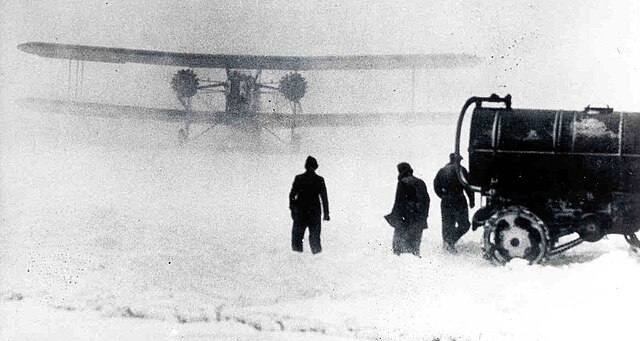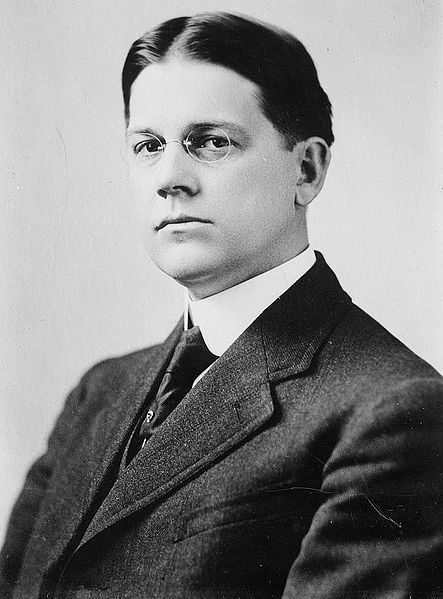The Air Mail scandal, also known as the Air Mail fiasco, is the name that the American press gave to the political scandal resulting from a 1934 congressional investigation of the awarding of contracts to certain airlines to carry airmail and the subsequent disastrous use of the U.S. Army Air Corps to fly the mail after the contracts were revoked.
Keystone B-6 twin-engine air mail plane of the US Army Air Corps in snow storm
Major Ruben H. Fleet beside s/n 38262 after delivering it to Washington, D.C., for the first airmail flight
Walter Folger Brown
Senator Hugo Black
Airmail is a mail transport service branded and sold on the basis of at least one leg of its journey being by air. Airmail items typically arrive more quickly than surface mail, and usually cost more to send. Airmail may be the only option for sending mail to some destinations, such as overseas, if the mail cannot wait the time it would take to arrive by ship, sometimes weeks. The Universal Postal Union adopted comprehensive rules for airmail at its 1929 Postal Union Congress in London. Since the official language of the Universal Postal Union is French, airmail items worldwide are often marked Par avion, literally: "by airplane".
Airmail instructional mark on a parcel from Kyrgyzstan
1912 German airmail between Bork and Brück
A cover carried on a 1932 first flight in the north woods of Canada, with a cachet and franked with both a regular and an airmail stamp
Study for The First Official Airmail Flight (1941), mural by Dorothea Mierisch at the post office in McLeansboro, Illinois








